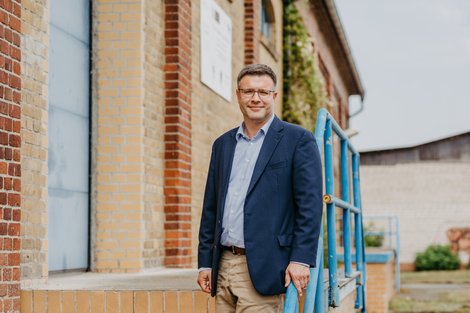Eliminating traffic congestion

Researchers at Otto von Guericke University are investigating the traffic flows in Magdeburg to allow for improved climate-friendly traffic planning.
The team at the Digital Application Center has obtained the necessary approvals from the city of Magdeburg and the regional highways authority (LSBB) to install in the Magdeburg urban area the technologies and systems that the team has developed in-house and that are needed for the study.
The first 25 radio modules were set up in March on the Magdeburger Ring and in parts of the city center, including the Europaring, the Westring and the Schleinufer. Vehicles operated by the city council and the local public transport authority (MVB) have been fitted with the corresponding communication systems. The data obtained by the researchers from these test areas will enable them to study private traffic and public transport and to develop intelligent solutions for future connected mobility systems and logistics services. The research team uses the radio signals from the vehicle-to-infrastructure (V2X) modules that are already fitted as standard in modern vehicles. The data are sent to radio modules installed on the lamp posts in the city. This allows the researchers to track traffic flows in real time, identify congested intersections and highlight ways of improving the traffic infrastructure. "The vehicles only tell the network system what sort of vehicle they are and how fast they are moving. The constantly changing IP addresses keep their identity anonymous. It is not relevant to the project," explained Andreas Müller, Managing Director of the Digital Application Center at the University of Magdeburg.
The research data will ultimately be available for all areas of the city, because the network will eventually cover the entire greater Magdeburg area. This will allow the roads leading to new plants that are built in Magdeburg to be routed efficiently. "Urban mobility systems are becoming increasingly complex and varied. More and more road users need to be taken into consideration," said Müller. "These analyses are hugely important for the development of new industrial plants by large investors and for people traveling in the city and switching from private to public transport, because thousands of people will be commuting to work in newly developed areas. Our research aims to ensure that the traffic flows are as efficient, environmentally friendly and safe as possible."
The real-time data from the test areas will be used to create simulations of traffic flows in the lab and test different scenarios to allow the routes to the new plant to be planned for optimum efficiency. In addition, future ideas are already being tried out. "The mobility management system of the future will require data to be shared between the road infrastructure and all other road users," said Müller. "Traffic information can be sent directly to cars. If a major sporting event is taking place, the traffic light timing can be adjusted on the basis of the data. And if local public transport is included, it will be possible to plan the traffic flows much more accurately."
Since September, the researchers have been developing an AI system that analyzes the data and identifies the ideal traffic flows on the basis of the mathematical patterns. In two to three years, the traffic lights in the city of Magdeburg could be controlled by this AI system in real time and traffic recommendations could be sent to drivers so that they are able to alter their route and their driving style accordingly. Drones will also be used in the future to classify vehicles and incorporate their CO2 emissions into the simulations. "This will enable us not only to improve travel times, traffic flows and traffic light timing, but also to reduce emissions, because cars emit huge amounts of CO2 every time they are started up," explained Müller.
As the module fitted in the cars is about the same size as a car radio, pedestrians and cyclists have not yet been included in the study, but this is likely to be possible in the future, for example via a smartphone app that Müller and his team plan to develop.
The project was presented at the press evening held by the Ministry of Infrastructure and Digital Affairs on August 24, 2022.
Source: www.ovgu.de

